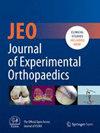Can repair be an alternative to reconstruction in the management of acute anterior cruciate ligament rupture: A meta-analysis of randomized controlled trials
Abstract
Purpose
To perform a meta-analysis to compare the clinical outcomes and failure rate of anterior cruciate ligament (ACL) repair and ACL reconstruction in acute ACL rupture.
Methods
Studies were searched on PubMed, Web of Science, and EMBASE for randomized controlled trials comparing ACL repair versus ACL reconstruction for ACL rupture. The bias risk was based on the Cochrane Handbook for Systematic Reviews of Interventions. Clinical outcomes included IKDC score, Lysholm score, Tegner score, anteroposterior (AP) knee laxity, and failure rate. The funnel plots were used to detect publication bias.
Results
Six randomized controlled study (RCTs) were included in this meta-analysis, involving a total of 478 patients. The mean follow-up varied from 1 to 5 years. The mean age of patients was between 17 and 29.1 years, the mean time from injury to surgery was 13–39 days. We found no statistical differences between ACL repair and ACLR in IKDC score (0.11; 95% CI, −0.17 to 0.40; p = 0.440; I2 = 56.8%), Lysholm score (0.16; 95% CI, −0.10 to 0.42; p = 0.214; I2 = 28.8%), Tegner score (0.05; 95% CI, −0.23 to 0.34; p = 0.719; I2 = 0.0%), AP knee laxity (0.05; 95% CI, −0.17 to 0.27; p = 0.636; I2 = 0.0%), and failure rate (RR, 1.10; 95% CI, 0.70–1.72; p = 0.695; I2 = 27.3%).
Conclusion
ACL repair showed similar clinical outcomes compared with ACLR, and it could replace ACLR as an appropriate surgical method for acute proximal ACL rupture, but the indication and selection of patients are essential to be considered. Large numbers and more high-quality studies are still needed in the future to verify our results.
Level of Evidence
Level I.


 求助内容:
求助内容: 应助结果提醒方式:
应助结果提醒方式:


